When I first heard about personal loans, I thought they were too good to be true. Money from a bank that you can spend on anything. Yeah right. But that’s exactly what a personal loan is. Reputable borrows (yes, you usually need a higher credit score) can take out money to spend on a variety of things like home repairs, studying abroad, or to buy holiday gifts (although, that’s not really recommended).
There are a few different types of personal loans out there. Each type of personal loan operates a bit differently. They also have some slightly different parameters when it comes to pre-qualifying and overall terms.
So to make things easier to digest, I’ll break down, not only how to pre-qualify and apply for these loans, but also the different types. My hope is that this will help you make the best decision for your personal financial situation.
What’s Ahead:
What is a personal loan?
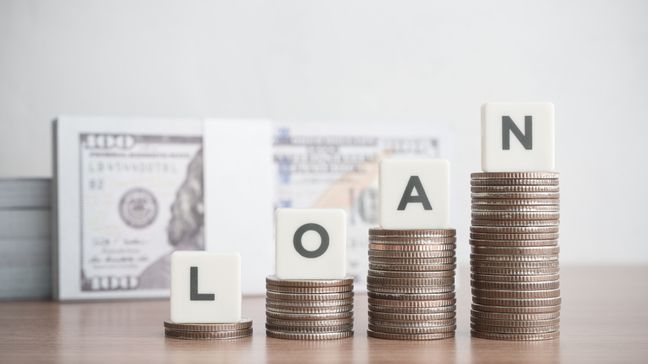
A personal loan is an unsecured loan taken out to help you handle whatever financial situation you may find yourself in. Usually, a personal loan can be easier to get than other types of loans, but the loan amounts are typically lower and the interest rates are higher.
With a personal loan, you will receive the funds in one lump sum. Whether you choose to spend them all at once is irrelevant. However, once the loan is closed and the funds are dispersed to you, the clock starts ticking on the loan term.
These loans have a set loan term length and monthly payment you will be paying, similar to a mortgage. This set amount makes it easier for you to budget the extra payment. But, it also means you will have that much less money in your budget to work with until the loan is paid in full.
A step-by-step guide to applying for a personal loan

If you are in need of a solution to your current financial situation, then a personal loan may just be the product you need. Here’s how to apply for a personal loan:
Step 1 – Figure out how much you need?
One of the most important factors to consider initially is how much money you need. The amount of money you take a personal loan out for will directly affect your financial situation for the length of the loan term. So, it’s important to take a fine-tooth comb through your finances and make sure you can afford this extra monthly payment.
You should also run the numbers to figure out exactly how much you need without going too far over or under. If you don’t take out a large enough loan, then you could still be strapped for cash and have to take out another loan. But if you take out too much, you could end up with much higher monthly payments and end up paying more in interest than you would have otherwise.
To learn how long it would take you to pay off your loan, check out MU30’s Loan Payoff calculator and run the numbers:
Step 2 – Know your credit score
Your credit score has a huge impact on how big of a loan you can qualify for. And it also affects how much you will ultimately be paying to borrow that money. If you don’t know your credit score off the top of your head, then it is a really good idea to check it.
Most credit cards offer a free credit score update every month now, so that is a good place to look. But, everyone also has the right to a free annual credit report at annualcreditreport.com. Even if you know your score, you should check this every year to make sure all of the facts affecting your credit are correct. I know that I have found some incorrect information on my credit report in the past and had to appeal it. That solved the issue and raised my credit score. But, if I hadn’t looked at my annual report, I never would have known it contained incorrect information.
Another good option to keep your finger on the pulse of your credit score are sites such as Credit Karma. Credit Karma offers free credit scores, credit monitoring, educational materials, and more.
You can also estimate your credit score with MU30’s Credit Score Estimator below:
Step 3 – Figure out your loan options
A really good place to begin when searching for a personal loan is your own bank. While not all banks will be a good fit, if you are already a client they may have more favorable terms for you. No matter who you choose to look into first though, there are a few key points that you should be looking at across the board.
First and foremost should be the APR (fixed or variable), loan length, loan amount, and the total amount you can borrow. All of these will impact your monthly payment. Which, for most of us, is the biggest factor as to whether or not we can afford to take out the loan.
Usually, personal loans are unsecured loans, which means there is no collateral tied to them. However, this is something to confirm prior to taking out any loan. Because, if the loan ends up being a secured loan instead, then whatever collateral is tied to it could be at risk if you default.
One more important factor to inquire about is whether or not there are any prepayment penalties. I, personally, will not take out any loan that has these penalties. If I can pay the loan off early and save myself some interest, then why wouldn’t I? However, if there are prepayment penalties, then it might not make sense to pay the loan off early. Either way, this is good information to have before you ever sign any paperwork.
Step 4 – Gather your personal information
The last step to embark upon prior to actually applying for a personal loan can be the most time-consuming. This is the gathering of personal information. And for a lot of us, it can be the point where we want to rip out our hair and walk away from the whole process.
The reason for this is due to the fact that it requires a high level of organization to have all of the required information at your fingertips when you need it.
Some of the information you should easily be able to gather from your budget, such as your monthly income, housing costs, and debts. But other information, such as your social security number, employer information, and how long you have been with your employer may require a bit more digging.
If you aren’t sure you will qualify for a loan based on your credit score, then this would be the time to consider who you might be able to use as a cosigner. Reach out to your potential cosigner possibilities and explain what is going on to see if they are willing to assist. It is a good idea to have all of this information ready and at your fingertips when you are ready to begin the application process.
Step 5 – Start the application process (finally!)
Once you have narrowed down your best personal loan options, it’s time to actually start applying for a loan. Most of us think of this part as the most time-consuming in the loan process, but the actual application doesn’t take very long compared to how much time you’ve spent on the previous tasks prior to this.
How you get pre-qualified or how you apply for the loan will be determined by the type of lender you end up going with (more on that below). Generally, the process is very similar across the board.
The pre-qualification process is pretty much the same, but I would recommend starting with loan aggregators (companies that give you quotes from a variety of different lenders). That way you can see all your options in one place. To begin the process, what an aggregator will need is:
- Your credit rating.
- Your zip code.
- The purpose of the loan.
- The amount you’re requesting.
Once that information is entered, you will see multiple lending offers come up on the screen, in most cases. Take a look at all of them to see which lender has the best repayment terms, APR, and monthly payment for you.
Once you have decided on one option to explore further, simply click continue. You’ll then need to enter more in-depth information to receive an actual offer from the lender.
In order for a lender to give you a full offer, they will need to pull a hard credit check, which can affect your credit score.
This information they usually request includes:
- Full name, address, phone number, email address, date of birth, and social security number.
- Whether you rent or own your home.
- Your highest level of education.
- Employment status.
- Annual income and pay frequency.
- The purpose of the loan and how much you need
- Your credit score estimate range.
- Whether you’re adding a cosigner or not.
After you have completed this information, you should begin to get communications in your inbox regarding the status of your application. Since aggregators use this information to match you with the best personal loan options, you should begin seeing offers from multiple lenders anywhere from a few hours to days.
Working with a direct lender will shorten the application process even further, but you’ll have to apply directly to multiple lenders to see your best rates (hence why you should use an aggregator first). They gather as much information right out of the gate as possible, which means making a hard pull on your credit. This saves them time, energy, and money by streamlining the process. But, it can also make it more difficult for you to get the preliminary facts without giving them all of your information.
Besides having a shorter application process, direct lenders usually offer one more perk. If you choose to set up your monthly payment via ACH, then you can usually get an interest rate reduction.
The different types of personal loan lenders

When it comes to personal loans, that market is growing thanks to advances in technology. You don’t have to gather all of your documents in a folder and walk into a bank anymore (although, you still can!). Now you can apply for loans entirely online in just a few clicks. To give you a sense of the different types of lenders, I’ve compiled a table below that summarizes the differences:
Types of personal loans How they operate
Aggregators A middle man who collects your financial information and then shops it to different lenders
Direct lenders Loans directly through the lender
Peer-to-peer lenders Match potential investors with borrowers
Aggregators
As I briefly mentioned above, aggregators in the personal loan world are similar to travel websites, Expedia and Travelocity. They work pretty much the same way, in that they connect you with a multitude of different loan servicers and loans at lower prices.
Personal loan aggregators are a great way to begin your search if you aren’t quite sure what you are looking for or what you qualify for yet.
I’m sharing two of the best personal loan aggregators, based on the application process and the products they connect you with.
Fiona
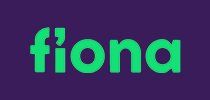 Fiona is an aggregator that has been around for a while now. So their algorithms have only gotten more efficient over time, which means better and better options for you.
Fiona is an aggregator that has been around for a while now. So their algorithms have only gotten more efficient over time, which means better and better options for you.
The minimum credit score to qualify with them is 580, which makes them a fantastic option for those with a lower credit score. Their loan range is between $1,000 – $250,000 and their interest rates run between 2.49% – 35.99%. And they only require a soft credit pull to get the initial information to you. So they could be a great option for those in the initial searching stages.
Credible
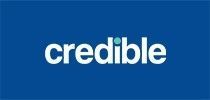 Credible makes finding the best personal loan for your needs, no matter the situation, incredibly easy. In fact, their site will walk you through the whole process in as little as two minutes! All you have to do is fill out one simple form. Credible offers loan amounts that range from as little as $600 to as large as $100,000, and you can get rates starting at 5.40% APR (with autopay), . See Terms*
Credible makes finding the best personal loan for your needs, no matter the situation, incredibly easy. In fact, their site will walk you through the whole process in as little as two minutes! All you have to do is fill out one simple form. Credible offers loan amounts that range from as little as $600 to as large as $100,000, and you can get rates starting at 5.40% APR (with autopay), . See Terms*
Once you find the lender, interest rate, and term that works for you, you can even sign the paperwork needed to close your loan directly through Credible’s site. After that, all that is left for you to do is sit back and wait for the funds to be deposited into your bank account.
Credible Credit Disclosure - To check the rates and terms you qualify for, Credible or our partner lender(s) conduct a soft credit pull that will not affect your credit score. However, when you apply for credit, your full credit report from one or more consumer reporting agencies will be requested, which is considered a hard credit pull and will affect your credit.Direct lenders
Another type of personal loan (that I covered above) is offered by direct lenders as a direct loan. These are offered through companies that are their own loan servicers. Therefore, they are the actual lenders.
These lenders only offer their own loan products to customers. And by doing so, they can be a one-stop-shop for a diversity of offerings, customer service, and rates. If you are already a customer with one of these lenders, such as a bank, you might have a better chance of getting the best rates they have to offer on their personal loan products.
Besides going to your bank, I am sharing two of my favorite direct lender options for their product diversity, customer service, and flexible rates.
SoFi
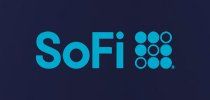 For those on the hunt for a direct lender, I can’t recommend SoFi enough. SoFi offers loans, from $5,000 to $100,000, with no fees and no complicated application process. In fact, you can pre-qualify for a loan with no commitment, in just two minutes. SoFi’s loan terms range from two to seven years and their fixed rates starting at 7.99% APR (with autopay discount).
For those on the hunt for a direct lender, I can’t recommend SoFi enough. SoFi offers loans, from $5,000 to $100,000, with no fees and no complicated application process. In fact, you can pre-qualify for a loan with no commitment, in just two minutes. SoFi’s loan terms range from two to seven years and their fixed rates starting at 7.99% APR (with autopay discount).
Besides the lack of fees, one of the best features of a personal loan through SoFi is their unemployment protection. Not only will they pause your payments if you lose your job (12 months max), but they will even provide resources to assist in your job hunt! This is an incredibly personal touch that goes a long way in building trust with SoFi’s borrowers.
Peer-to-peer lenders
Peer-to-peer lending is another great way to get a personal loan. It is also a fantastic option if you are looking for more ways to invest your money and help others.
With peer-to-peer lending, people invest their money into a company with a guaranteed return on their money at a certain percentage. The money is then pooled together and the company is able to lend it out to people needing the cash for a myriad of different reasons. It is a pretty ingenious way for us all to help each other, or get the help we need sometimes.
If peer-to-peer lending sounds right up your alley, then here are two great options that traditionally have good rates, are easy to maneuver, and have multiple options.
Prosper
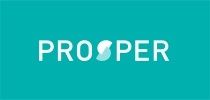 Prosper is a peer-to-peer lending group that has a tendency to loan out higher amounts of money. But that means they usually require a slightly higher credit score of at least 640, as well as a higher income.
Prosper is a peer-to-peer lending group that has a tendency to loan out higher amounts of money. But that means they usually require a slightly higher credit score of at least 640, as well as a higher income.
Their loans range from $2,000 – $40,000 and their interest rates run between 6.95% – 35.99%. Prosper has no prepayment penalty, faster funding than most traditional loans, and only requires a soft credit check.
LendingClub
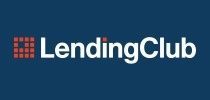 LendingClub is one of the original peer-to-peer lenders. So they have a lot of personal loans under their belts. The minimum credit score to secure a loan with them is 600. But, for the higher loan amounts, you will need a much higher credit score to qualify.
LendingClub is one of the original peer-to-peer lenders. So they have a lot of personal loans under their belts. The minimum credit score to secure a loan with them is 600. But, for the higher loan amounts, you will need a much higher credit score to qualify.
Their loans range from $1,000 – $40,000 and their interest rates run between 6.95% – 35.89%. The average loan is closer to $10,000 though, and will be based on your personal situation. A couple of the perks with LendingClub are that they have a hardship plan option available and might pay off some creditors with their debt consolidation loans. Which is pretty awesome!
Reasons why you should consider taking out a personal loan

Some of the most common reasons why people choose to take out a personal loan, instead of a different type of loan, are:
- Debt consolidation.
- Medical bills.
- Student loans.
- Necessary household repairs.
- Credit card debt (if the interest rate is lower than what you are already paying).
Reasons why you shouldn’t consider taking out a personal loan
There are many reasons why you could consider taking out a personal loan. But, it is usually best to exhaust other financial solutions first that may ultimately cost you less money.
For example, you shouldn’t take out a personal loan to pay for a car if you can afford to pay upfront in cash or you are eligible for an auto loan with a lower interest rate!
Additionally, personal loans shouldn’t be used:
- As supplemental income to cover expected expenses.
- If you are already having trouble managing your debt.
- To invest without guaranteed returns.
- To gamble or partake in illegal betting.
- To fund your wants – new shoes, a new gaming console, concert tickets, your dream vacation, or a new pet.
- To supplement a down payment on a mortgage.
Summary
Overall, there are a lot of different options for personal loans. You will ultimately have to decide if you prefer aggregators, direct lenders, or peer-to-peer lenders. They each have their pros and cons. Just make sure that you have searched and thoroughly done your homework before pulling the trigger.


